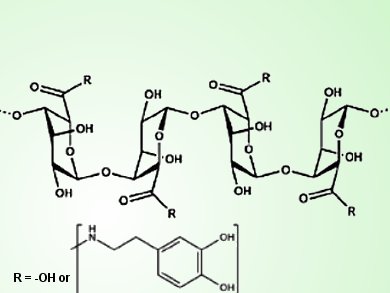Marine mussels stick to rocks under water flow thanks to proteins rich in 3,4-dihydroxy-L-phenylalanine. This aminoacid, in fact, contains cathecol, a benzene derivative that can strongly adhere to organic and inorganic surfaces.
Christian Kastrup, David H. Koch Institute for Integrated Cancer Research, USA, and colleagues mimicked the adhesiveness of mussels in order to obtain a hydrogel firmly and durably adhering to arterial vessels under physiological blood flow. By combining catechol with alginate, a polysaccharide that forms stable and biocompatible hydrogels, the researchers obtained a compound (pictured) that glued to damaged blood vessels. In doing so, the gel formed a protective barrier between the arterial walls and the blood and stabilized atherosclerotic plaques, lipidic arteries’ thickening whose rupture causes heart attacks and strokes.
- Painting blood vessels and atherosclerotic plaques with an adhesive drug depot,
Christian J. Kastrup, M. Nahrendorf, J. L. Figueiredo, H. Lee, S. Kambhampati, T. Lee, S. Cho, R. Gorbatov, Y. Iwamoto, T. T. Dang, P. Dutta, J. H. Yeon, H. Cheng, C. D. Pritchard, A.J. Vegas, C.D. Siegel, S. MacDougall, M. Okonkwo, A. Thaia, J. R. Stone, A. J. Coury, R. Weissleder, R. Langer, D. G. Anderson,
Proc. Nat. Acad. Sci. 2012.
DOI: 10.1073/pnas.1217972110




